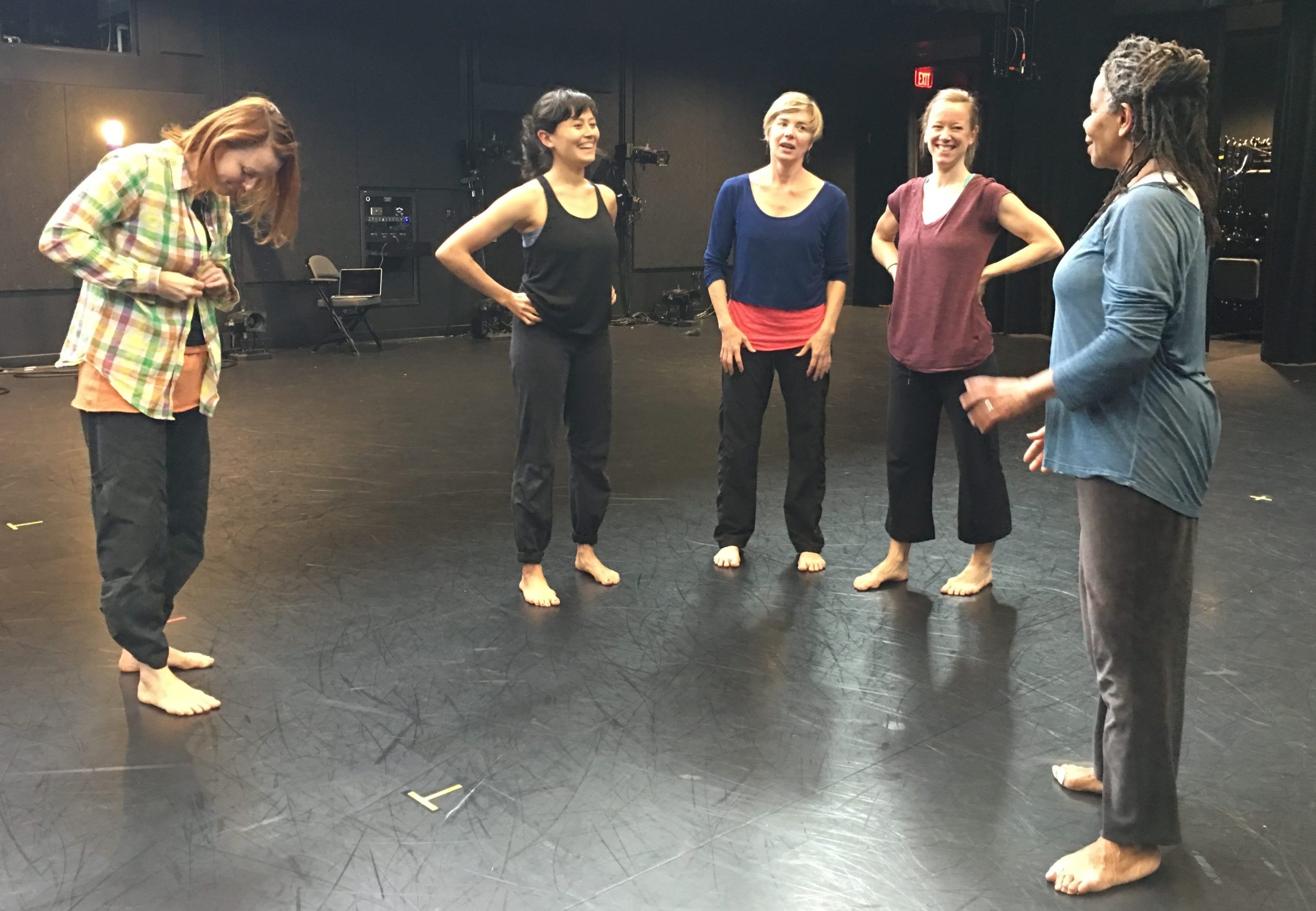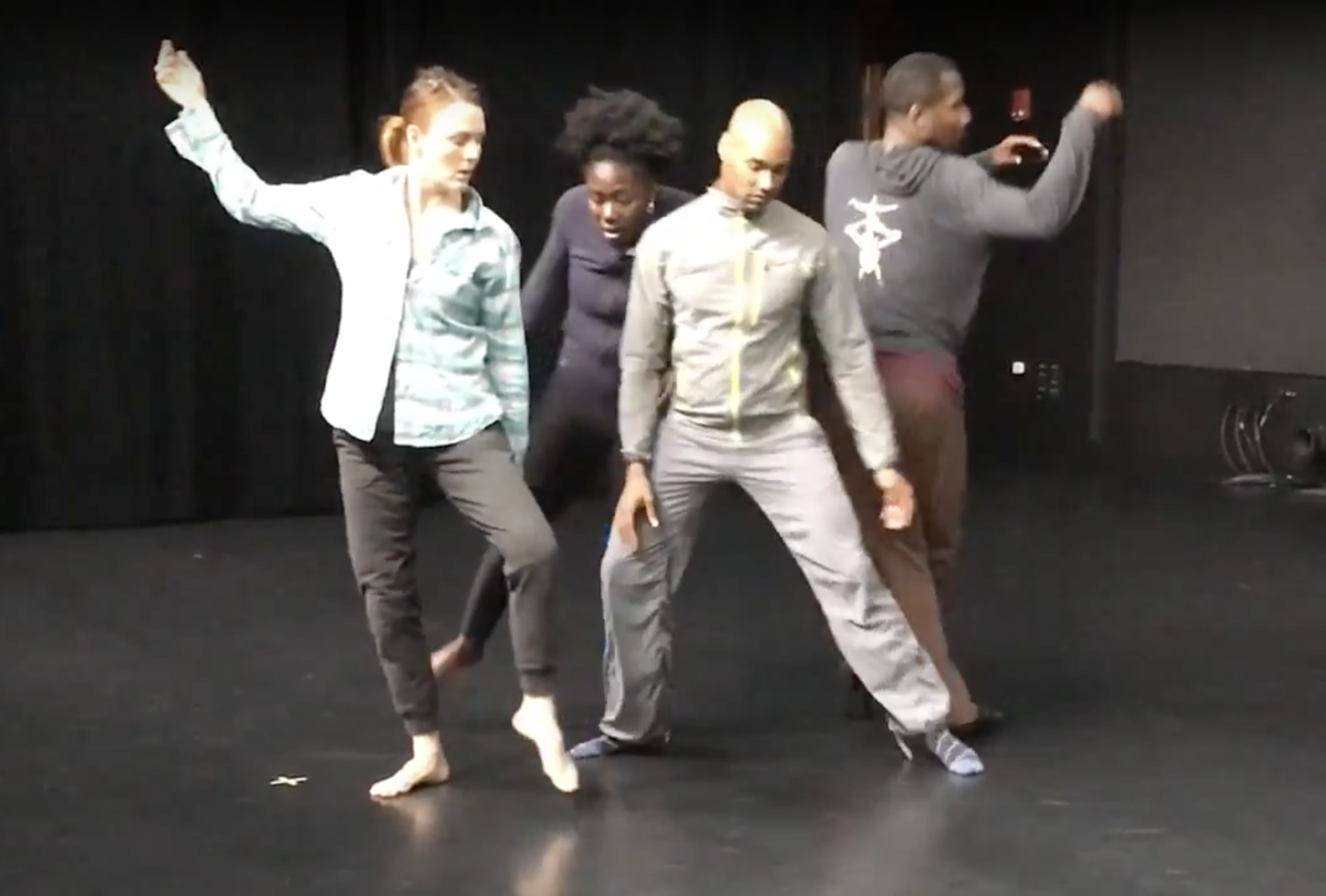Although we’ve already begun officially, we now begin to make a dance. In March, during our first convening of The Making Room, we started to see what beginning would look like for two choreographers with distinct processes. Now, gathering together at the Department of Dance at The Ohio State University, there is only Bebe Miller Company, although in a configuration that’s new to most of us. The first week brings together: Michelle Boulé, an award-winning dance artist and teacher from NYC, who had seen Angie and Darrell Jones (a 20-year veteran of BMC who has also worked extensively with choreographers Ralph Lemon, Jawole Willa Jo Zollar of Urban Bush Women, Min Tanaka, and others in addition to creating his own choreography) perform the year before and, wanting to know more about how they got to be the duet they are, came to a BMC workshop to find out; Sarah Gamblin, who last danced with the company 15 years earlier in NYC and was now an associate professor and Contact Improvisation mentor at Texas Woman’s University; Bronwen MacArthur, who I knew in the NYC contemporary dance arena in the early 1990s, now a lecturer at Smith College and other local institutions; Maddie Leonard-Rose, a third-year student in Dance at OSU who joins us for a few days; and Angie.

The pressure of a deadline is old news to most of us, in any field. We have a week—all we need to do is see what we do. There is an immediate appetite for watching each other dance. The syntactical conjunction of bits of dance that we had found last March is a gentle guide. We improvise quite a bit, and name predilections, similarities, timings, anything we find interesting. And then, surprisingly, there’s an 11-minute quartet. Yahoo! We are a room of improvisers rediscovering how to repeat a string of actions.
We work independently, feeling out our attentions: to arms, space, a sequence of sensation and action. There’s a palpable difference between improvising to find something and improvising to set a repeatable phrase. The restarts and returns to the beginning keep everyone working fairly quietly, alone and together. I’m always humbled to see how they think in-between the decisions of what to do, when to do it. The small meditations are almost invisible, always in time. Eyes are down, thinking in-between the working.
A premiere hasn’t been solidified on the calendar but there is a known, finite number of weeks ahead. All we need to do is see what we do, but the productive friction of a calendar date is a fun cattle prod. Perhaps precisely because we are all improvisers, the prospect of re-articulating a repeatable quartet is intriguing enough to keep at it.

The second week brings together a different group: Angie and Christal, plus Darrell and Trebien Pollard, a dancer who has worked prodigiously with the companies of Pilobolus, Martha Graham Ensemble, Urban Bush Women, Ronald K. Brown/Evidence, and others, and who is one of Darrell’s oldest friends.
Once more there’s a mix of folks who have and haven’t worked together previously but who have known of each other’s dancing for a long time.
With this second group we start again with improvising to hone a language together. Fairly quickly though, Wallace’s short story Incarnations of Burned Children comes up and serves as an altogether different marker of syntax. The story’s syntax is in service to a pungent, horrific narrative. It is intense—any abstraction of the language feels ridiculous. It takes some effort to move away from the story line and look at how Wallace does what he does.
The dancers each write out their own map of the story, tracing action and effect in a two-dimensional format, which then provides a rendering that can be applied to how we occupy the space between us. A retelling of Wallace’s story is of no interest. What is utterly compelling is the recognition that he carries us through the mundane to arrive at an extraordinary level of intensity. There are compositional strategies we practice: reversing an action without erasing ourselves; shifting a limb supporting our weight and then seeing where the weight goes; extending a physical direction; treating our arms asymmetrically; keeping the center of weight at risk. We practice these strategies as a company, experimenting with them in our individual ways, allowing them to take on a life of their own for each of us.